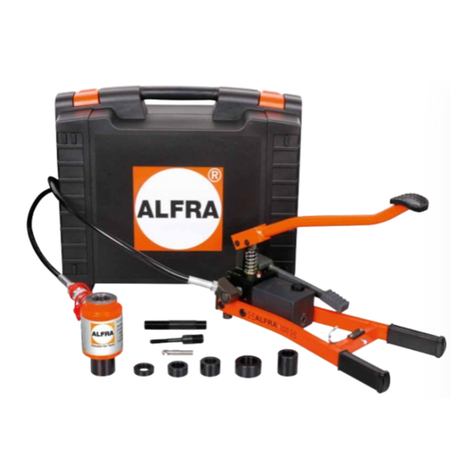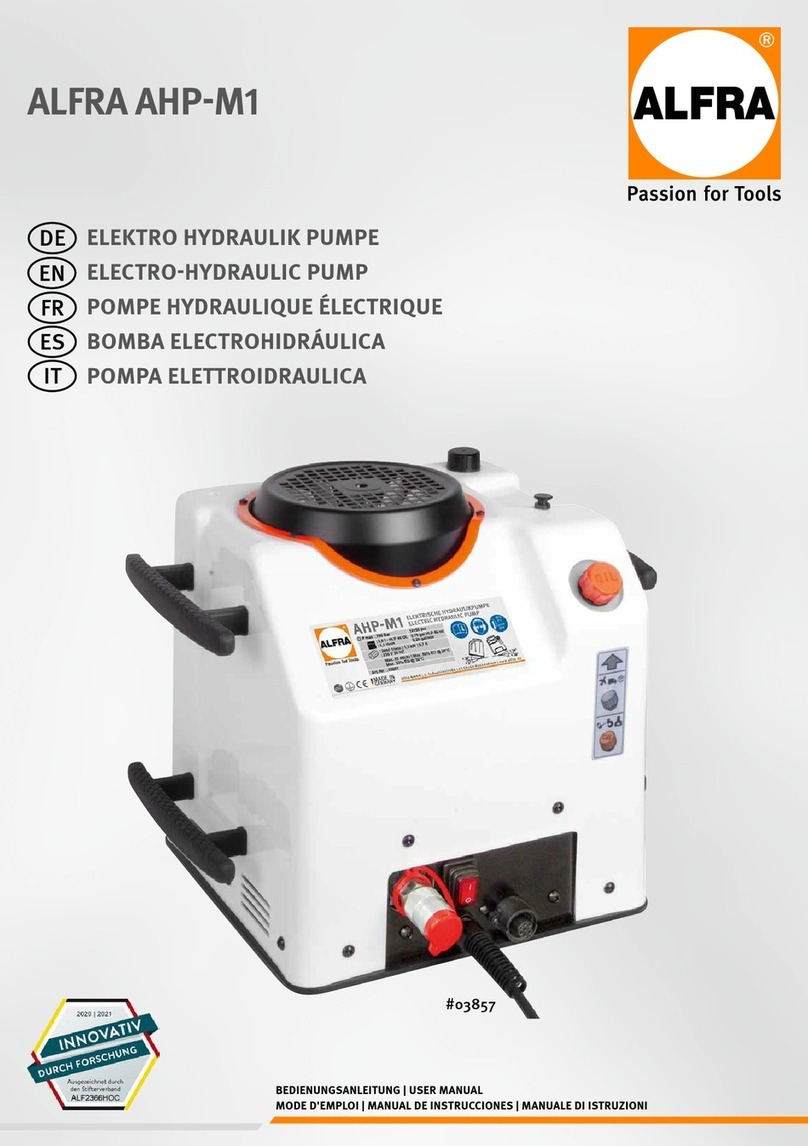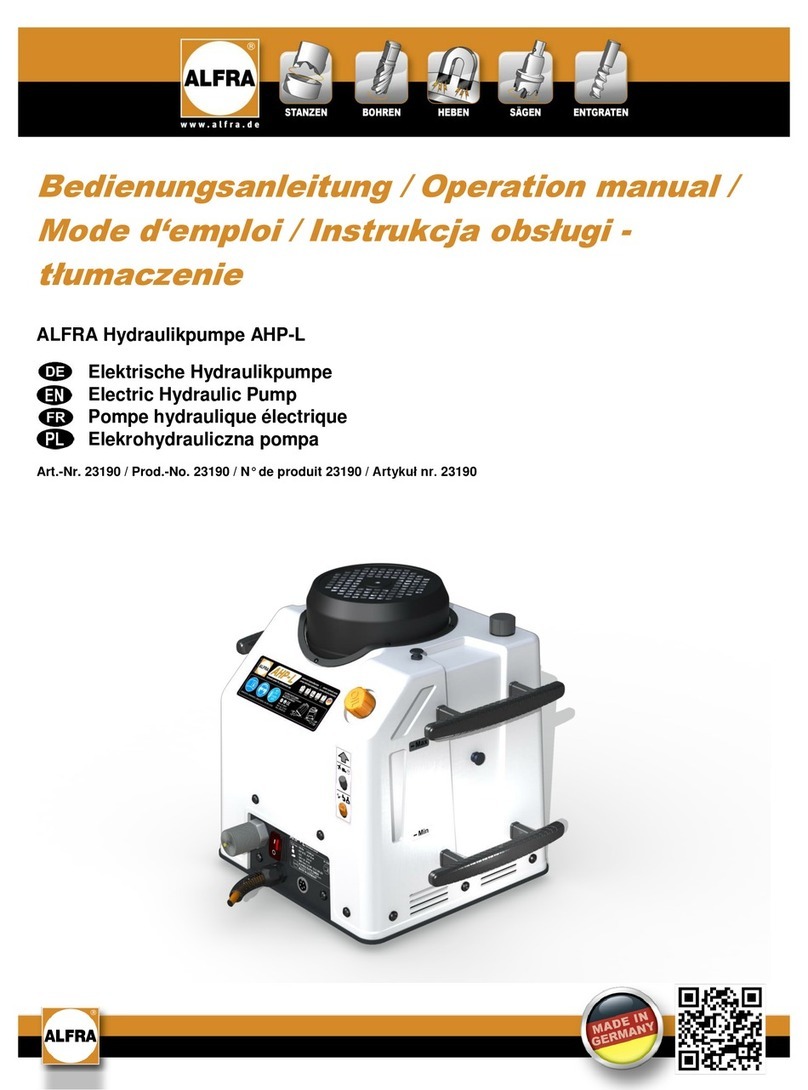
6
Inbetriebnahme
Sie erhalten eine vollständig montierte Hydraulikpumpe sowie eine detaillierte Bedienungsanleitung. Bitte prüfen
Sie bei Erhalt der Ware deren Zustand auf mögliche Transportschäden und den Lieferumfang auf Vollständigkeit.
Wenden Sie sich bei Problemen bitte umgehend an den Hersteller oder Ihren Händler.
Vor dem ersten Gebrauch unbedingt die Bedienungsanleitung lesen!
1. Prüfen Sie den Ölstand durch die seitlichen Sichtfenster und füllen Sie bei Bedarf neues Hydrauliköl HLP 46
nach.
Hinweis:
Der Ölstand der ALFRA AHP-Hydraulikpumpe sollte sich im Normalzustand zwischen den Markierungen
„Min“ -„Max“ auf der Seite des Pumpengehäuses befinden. Damit ist gewährleistet, dass bei der
Verwendung der angeschlossenen Werkzeuge ausreichend Hydrauliköl zur Verfügung steht, um den
Zylinder zu füllen und zu verhindern, dass die Pumpe trocken läuft.
2. Kabel und Stecker auf Beschädigung prüfen, danach den Netzstecker einstecken.
3. Hydraulikschlauch auf Quetschungen oder andere Beschädigungen überprüfen und mit der Schnellkupplung
der Pumpe und des Werkzeugs verbinden.
4. Vor der ersten Verwendung unbedingt die abdichtende Verschlussschraube (schwarz) an der Tanköffnung
durch die luftdurchlässige Belüftungsschraube (orange) ersetzen, damit während der Arbeit Luft in den Öltank
strömen kann.
5. Die Steuerleitung des Werkzeugs, der Fernbedienung oder des Fußschalters an die 5-polige Flanschdose
anschließen.
6. Netzschalter auf (I) stellen, um die Pumpe einzuschalten und in den Bereitschaftsmodus zu versetzen.
7. Das gewünschte Material im Werkzeug positionieren und je nach Bearbeitung auf eine mittige Positionierung
achten.
Beachten Sie stets die Angaben der Bedienungsanleitung sowie die Verwendungsdaten und
Besonderheiten des angeschlossenen Werkzeugs!
Verwenden Sie keine Werkzeuge, die Schäden aufweisen oder mit deren Umgang Sie nicht vertraut sind!
8. Durch Betätigung des Startschalters am Werkzeug, dem Handschalter oder dem Fußschalter werden der
Pumpenmotor und das Magnetventil aktiviert, sodass der Ölstrom ins Werkzeug freigegeben ist.
Je nach Steuereinheit oder Werkzeug kann der Bearbeitungsvorgang mit einer Pausenfunktion
unterbrochen werden. Hierbei wird der Motor zwar angehalten, doch das Magnetventil bleibt aktiviert,
sodass das Werkzeug nicht zurückfährt und der Druck im System bestehen bleibt.
9. Nach dem Arbeitsvorgang den Stoppschalter betätigen, um die Pumpe und das Magnetventil zu deaktivieren.
Das Öl kann nun vom Werkzeug in den Tank der Pumpe zurückströmen und das Werkzeug fährt in seine
Ausgangsposition zurück.
10.Um die Pumpe auszuschalten, den Netzschalter auf (O) stellen. Vor dem Transport die Belüftungsschraube
entfernen und die Tanköffnung mit der Verschlussschraube verschließen, um ein Auslaufen der
Hydraulikflüssigkeit zu vermeiden.































